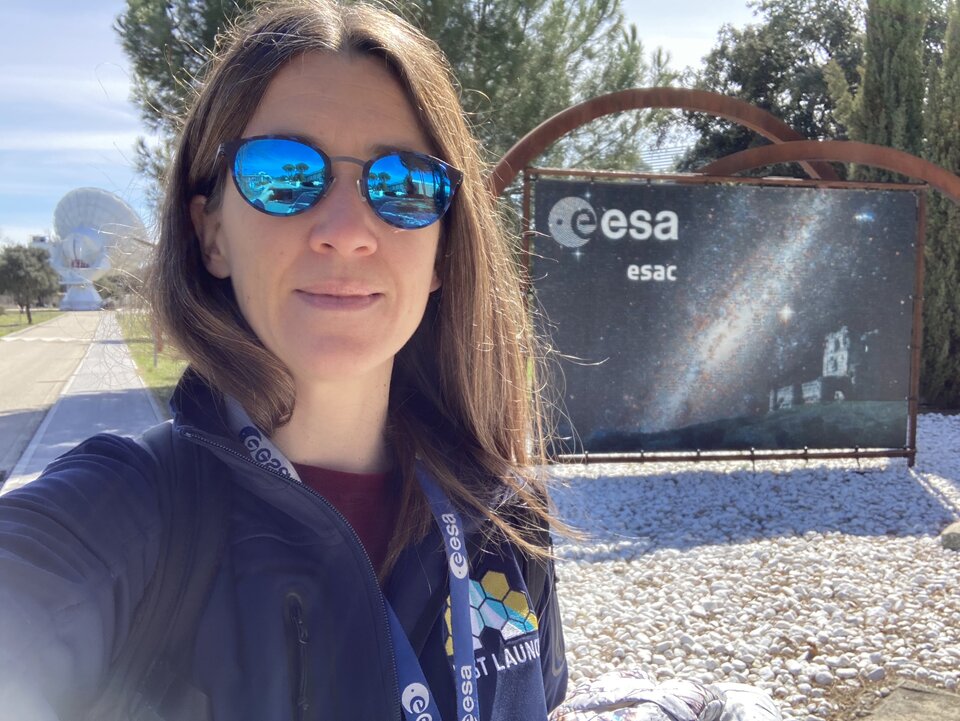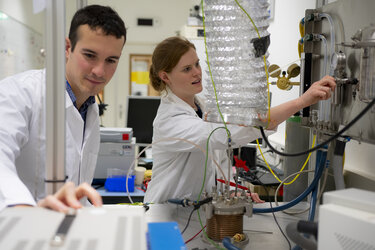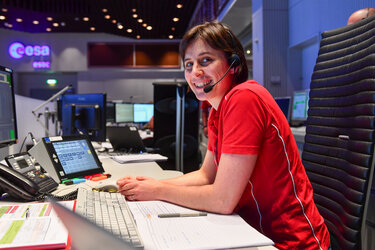Former ESA Research Fellows: Where are they now?
ESA's postdoctoral Research Fellowship Programme offers early-career scientists and engineers the possibility to carry out research in a variety of disciplines related to space science, space applications or space technology. As we launch the 2023 Space Science Research Fellowship Programme, we are inviting former Research Fellows to share their experience at ESA.
This month we are interviewing Catarina Alves de Oliveira who was an ESA Research Fellow in the Directorate of Science and now is a Science Operations Development Manager at ESA.

Where and in which role are you working today?
I work as a scientist and manager in the Science Directorate of the European Space Agency. As a Science Operations Development Manager, I am responsible for the teams designing and implementing ESA’s contributions to the science operation centres of two upcoming missions: Ariel and SMILE. I am based at ESAC, ESA’s European Space Astronomy Centre in Spain, where I work with multidisciplinary teams of scientists, engineers and software developers. Space missions are collaborative endeavours and on any given week, I also interact with partner space agencies such as NASA, as well as many European universities and scientists.
What were you doing before joining ESA as Research Fellow?
Before joining ESA as a Research Fellow, I was a Marie Curie Fellow in a European Training Network hosted at the Institut de Planétologie et d'Astrophysique de Grenoble (IPAG), in France. Joining ESA had been on my mind since I finished high school, the same year that Portugal became a Member State. Seeing that door opening for me, as a Portuguese person, was so inspiring, it led me to study Physics and Applied Mathematics for my undergraduate degree! Throughout the years, I always kept up to date with the job opportunities at ESA and did not hesitate to try my chance with the Research Fellowship programme.
What did you work on during your fellowship at ESA?
I worked on data from ESA’s Herschel mission which was just spectacular. Operating in the far-infrared and sub-millimetre wavelength regime, the observatory unveiled an exquisite view of the sites where stars are forming in our Galaxy, filled with a much more complex filamentary structure than what was known before. Together with my collaborators, I published several articles on the findings, such as disks seen around very low young mass stars which may be forming planets, or the characterisation of these ubiquitous filaments and their role in forming stars. During the fellowship I also took the initiative to organise two workshops, one focused on programming techniques in Python for scientists and the other gathering scientists from the Madrid area working on star formation. It was great to get ESA’s support for these initiatives that helped grow my network and find new collaborators.
Where did your path lead to after your Research Fellow experience?
During the first year of my fellowship a job vacancy opened at ESA and after going through the selection process, I was offered the position of Instrument Scientist working on the James Webb Space Telescope. That was the beginning of an incredible journey, where I followed the development of ESA’s NIRSpec spectrograph from Europe to the United States of America, culminating with the spectacular launch and science observations that amaze us almost every day now. Once Webb was ready for science, I turned my focus to the development of the next missions in line.

What was the most valuable takeaway from your experience at ESA?
ESA’s Research Fellowship gave me insight on how it is to work in such a large international organisation in the space sector. Having worked at ESA for the past 11 years, I would describe it as being both an exciting and humbling experience every single day. At ESA I learned the power of working in large, cross-disciplinary and multi-cultural teams, sharing progress and frustrations when developing a mission for many years, until the day of the launch. Then, I only think of the scientists whose work depends on the mission success, and the eyes of the public, whose support is key to what we do. Individually, my contributions represent a tiny fraction of the effort needed to prepare and operate a space mission. But whenever I see the amazing discoveries made about our Universe using data from a mission I have worked on, I know that I am also part of that achievement. And that really inspires me and makes me enjoy my work every day.
Is there anything else you would like to tell early career researchers who are planning to apply for Research Fellowships at ESA?
There has never been a better time to take up a fellowship at ESA. There is a wealth of data to explore in our archives and so many missions being launched, it is just fantastic. The working conditions of the fellowship are very attractive, and in my case, being based at ESAC, I have a great combination of working in quiet surroundings close to nature but with the buzzing capital Madrid close by. Finally, working at ESA gives you the chance to learn not only about space science but also Earth observation, space debris, human exploration and so many other areas. It is a truly unique place to work.

Call for applications
ESA has selected 12 new Fellows to pursue their own independent research in space science in 2023 The Research Fellowships in Space Science represent one of the highlights of the ESA Science programme. Early career postdoctoral scientists are offered the unique opportunity to carry out advanced research related to the space science areas covered by ESA Science missions at one of three ESA establishments (ESAC, ESTEC or STScI) for a period of up to three years.
The research areas that they cover span a broad range of topics, including the origin of nature’s most powerful explosions, the composition of the exospheres of Jupiter’s moons Europa and Ganymede, and the processes governing the heating of the solar corona. Learn more about the Fellows and their research here.
The calls for the Space Science Research Fellowships open yearly. The next call is expected to open in August 2023. More information can be found here.

Life at ESA
ESA is proud to offer its employees a stimulating and inspiring work environment that is complemented by myriad on-site services and facilities that make their ESA experience outside of work equally as rewarding.
Learn more about life at ESA.















 Germany
Germany
 Austria
Austria
 Belgium
Belgium
 Denmark
Denmark
 Spain
Spain
 Estonia
Estonia
 Finland
Finland
 France
France
 Greece
Greece
 Hungary
Hungary
 Ireland
Ireland
 Italy
Italy
 Luxembourg
Luxembourg
 Norway
Norway
 The Netherlands
The Netherlands
 Poland
Poland
 Portugal
Portugal
 Czechia
Czechia
 Romania
Romania
 United Kingdom
United Kingdom
 Slovenia
Slovenia
 Sweden
Sweden
 Switzerland
Switzerland






























